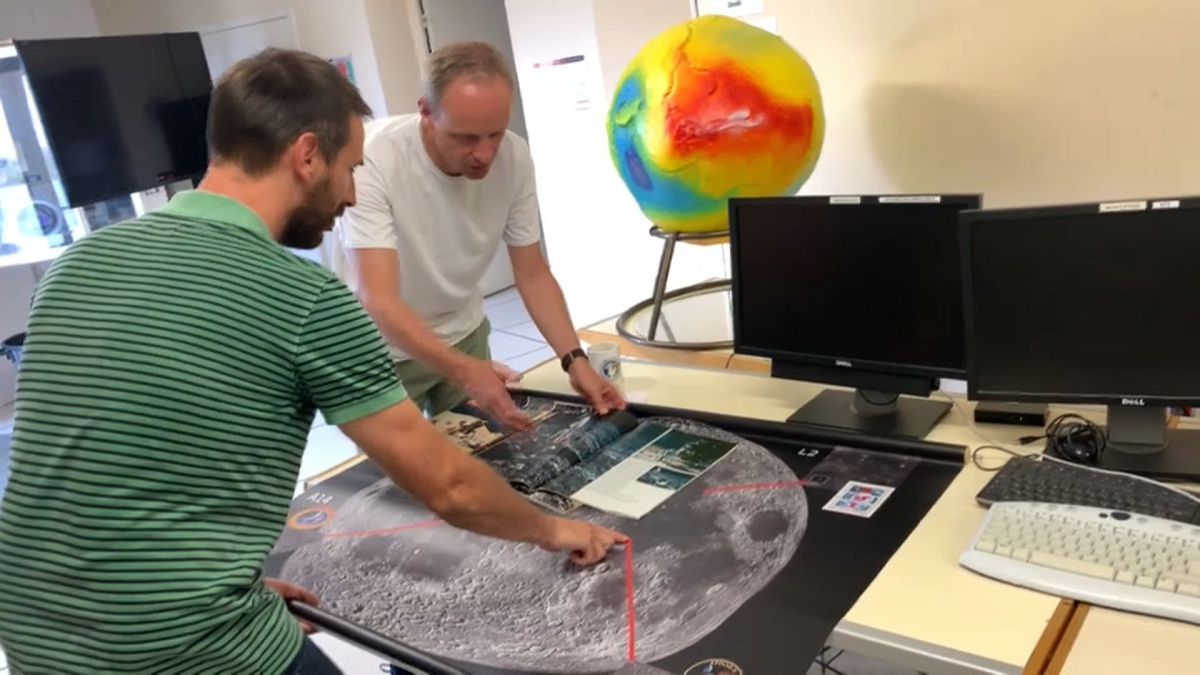It's 50 years since the Apollo Moon landings, when Neil Armstrong and Buzz Aldrin made their first steps on the lunar surface. And instruments that those two astronauts placed on the Moon are still being used every day.
This weekend we celebrate 50 years since the Apollo Moon landings, when Neil Armstrong and Buzz Aldrin made their first steps on the lunar surface.
And although it may seem like ancient history, one of the science instruments that those two astronauts placed on the Moon is still being used every day by astronomers in France.
Reflector placed on Moon by Neil Armstrong and Buzz Aldrin
Every day, on the plateau de Calern in the south of France, Clément Courde aims his telescope at the spot where the lunar module landed in July 1969.
"Since 1981 we've been firing lasers at the Moon, at the reflector placed there by the Apollo 11 mission, by Neil Armstrong and Buzz Aldrin,” he explains. “And every day when the weather allows we're able to measure the distance between our station and the reflector."
The team at the Observatory of the Côte d'Azur can measure the average 384,000 kilometres distance to the Moon to within a few millimeters.
"We time it,” says Courde. “The beam is created here, we start the clock, the beam goes out of the telescope, it goes to the reflector in 1.2 seconds, it's reflected, and then in another 1.2 seconds it comes back, then we stop the stopwatch. And with that we have the flight time, and we can then deduce the distance. And we do that 10 times every second."
The reflector placed on the moon was featured in magazine reports at the time.
"That's the Apollo 11 panel which was put there 50 years ago now,” says Courde, pointing to a photograph shot on the moon. “And it's 50 centimetres by 50 centimetres, with 100 corner cubes, 100 corner cubes like that. And that's been working for 50 years!"
Measurements increase our knowlegede of the Moon's internal structure
Measuring the slight variations in the movement of the Moon is useful for studying its internal structure and relationship with planet Earth.
Just this month scientists using this team's data made a fresh estimation of the radius of the Moon's molten core, putting it at around 381 kilometres.
"We improved by a factor of three on previous estimations - and that's an argument to show that despite the fact that these panels were put there 50 years ago - there's still science that can be done, and there are still questions we can try to answer," says Courde.
